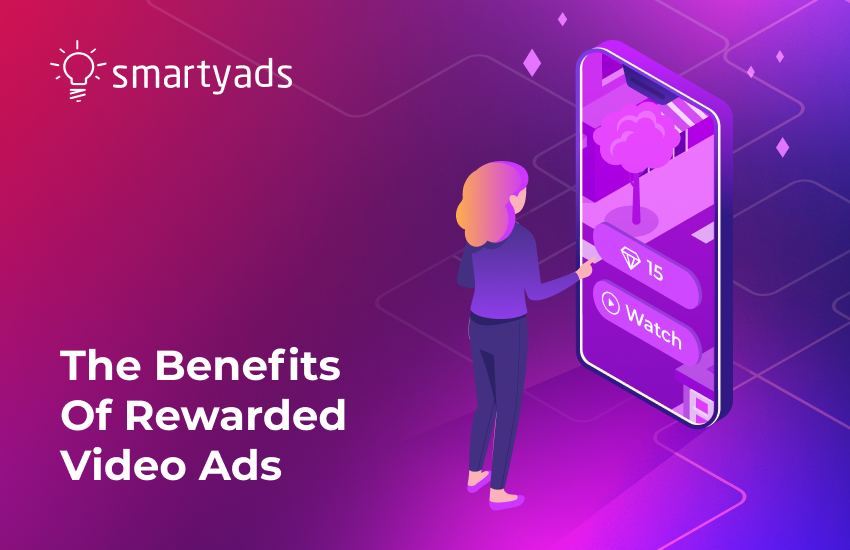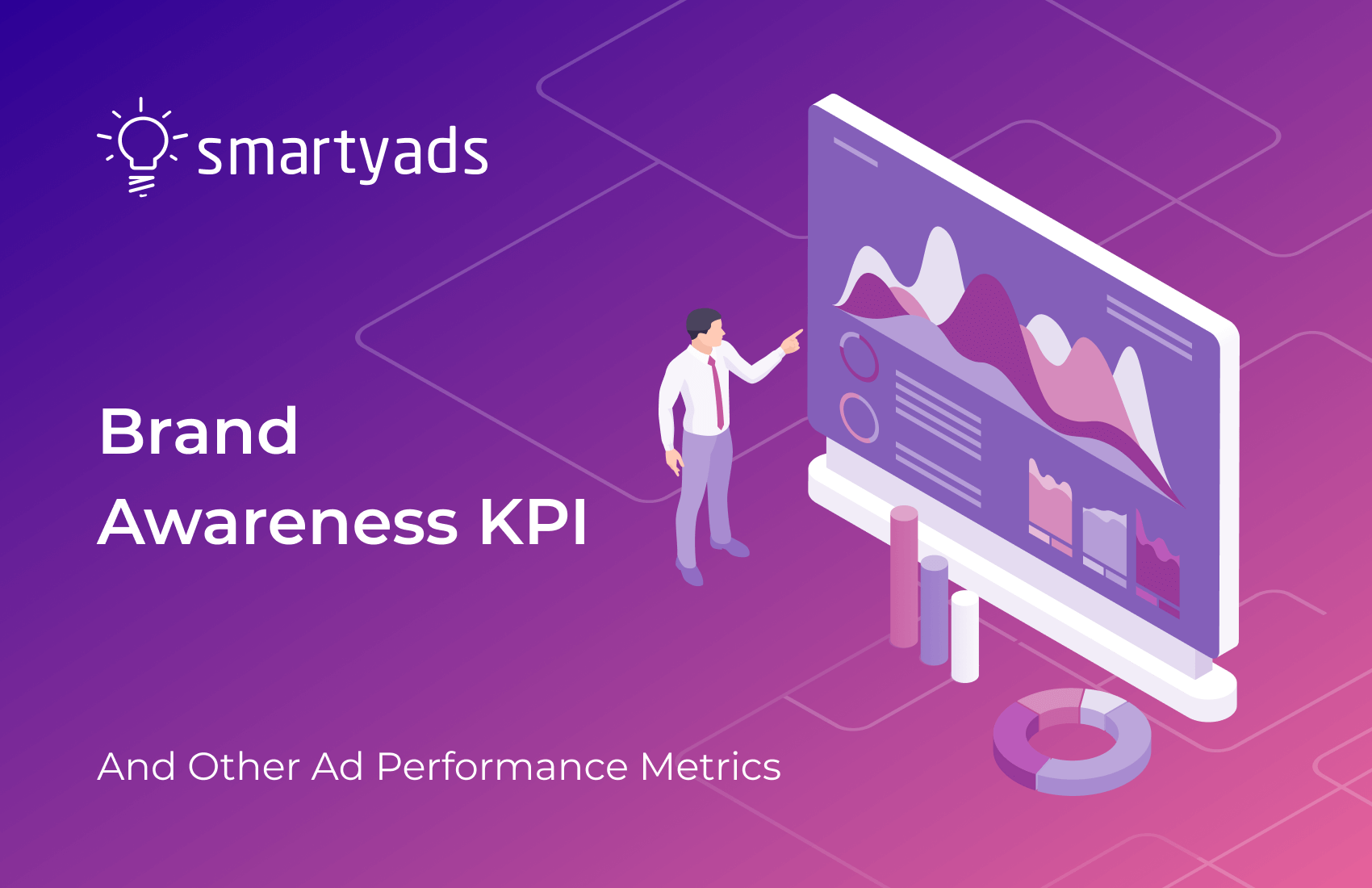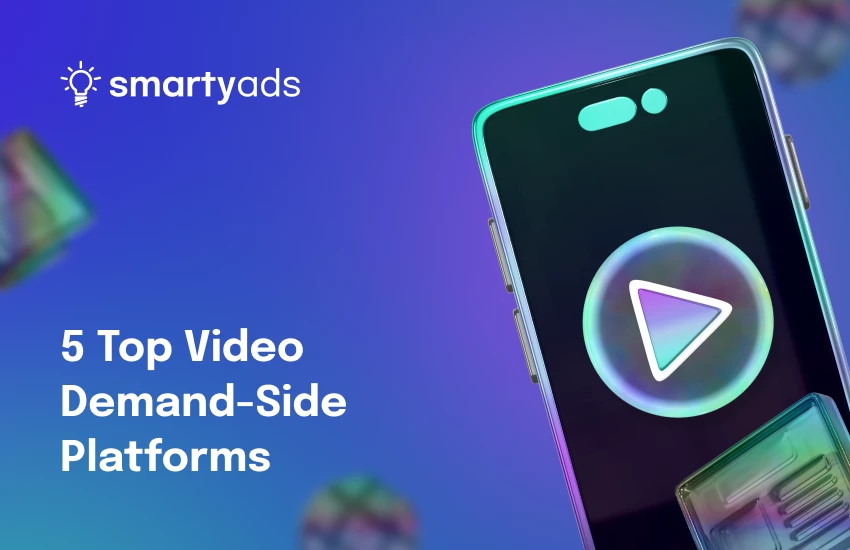Rewarded video ads are a hot topic of discussion among digital marketers today, as this type of advertisement has the greatest potential to engage users in both ad-supported content and content offered by mobile apps.
Unity Ads, a monetization platform, has undertaken research to illuminate the effectiveness of rewarded video advertisements. Their findings indicate that approximately 62% of mobile game enthusiasts actively choose to engage with rewarded video ads.
This preference stems from the tangible benefits rewarded video ads offer users, such as in-game rewards, virtual currency, or access to premium content. By offering these incentives, reward video ads create a win-win situation, where users enjoy an enhanced experience while advertisers can effectively communicate their message.
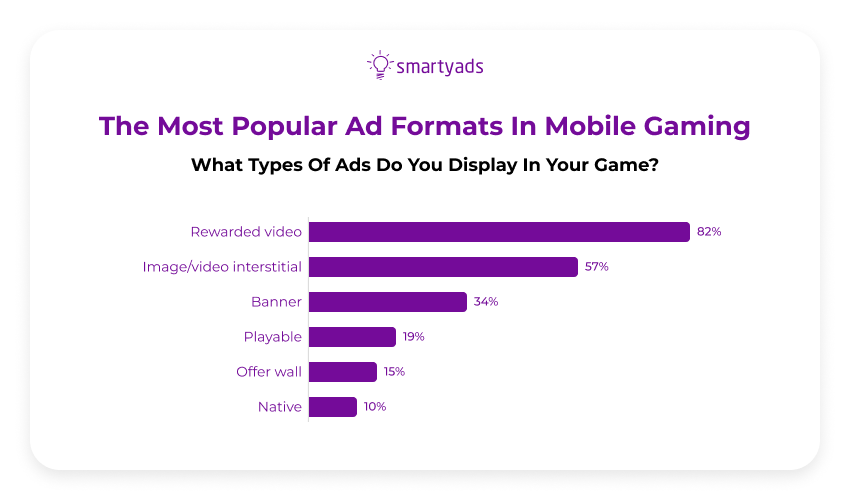
Also, according to Unity Ads research, 71% of users prefer rewarded video ads to other ad formats. This behavior is primarily due to the unobtrusive nature of the ads, as users willingly agree to watch them in exchange for a meaningful reward. Consequently, this leads to a more positive user experience.

How rewarded video ads work?
Rewarded video ads, a dynamic and user-friendly ad format, have revolutionized the digital advertising landscape by creating a mutually beneficial ecosystem for publishers, advertisers, and users. Such ads are run using rewarded video ad networks.
Getting rewards for ad-watching
Fundamentally, rewards ads function on a straightforward yet impactful concept: users receive concrete rewards in return for dedicating their time to engaging with a full-screen video ad. Typically, these ads are succinct, lasting between 15 to 30 seconds.
Importantly, rewarded videos are designed to be non-skippable, ensuring that users engage with the content in its entirety. However, it's crucial to note that users always retain the option to disable these ads, putting them firmly in control of their experience.
For instance, in a mobile gaming scenario, users may be granted valuable in-game assets, such as coins, power-ups, or access to premium features, in exchange for watching a rewarded video ad.
This approach transforms advertising from a disruptive element into a value-driven proposition, where users willingly opt to view ads for the rewards they receive. This win-win situation has garnered immense popularity among both users and advertisers.
Win-win for publishers and advertisers
From a publisher's perspective, rewarded video ads provide a dependable revenue stream. Publishers can monetize their content by seamlessly integrating these ads into their applications while upholding a positive user experience.
Conversely, advertisers benefit from expanded access to their target audience through rewarded videos. The non-skippable format ensures effective message delivery, heightening brand engagement and recall potential.
For users, the benefits of rewarded video ads are evident. They can enjoy their preferred apps and games without disruptive interruptions and, instead, have the chance to earn valuable rewards, enriching their overall experience.
Impressive 45% CRT boost and 4.5 times higher in-app purchases
Rewarded video advertising is beneficial and valuable for advertisers and app developers; this reward advertising format has also developed some interesting trends in recent years. However, how clearly can this be expressed in numbers? Let's understand it with a few examples.
CTR. A recent comparative study conducted by Aarki discovered that the click-through rate (CTR) of rewarded videos outperformed their non-rewarded counterparts by an impressive 45%. Additionally, the study revealed that install rates for rewarded videos were nearly twice as high as those for non-rewarded videos.
User retention. A 2021 study conducted by ironSource determined that rewarded video ads had the most significant impact on user retention compared to any other ad type. These ads demonstrated 3.5 to 5 times higher 30-day retention rates than the established benchmark.
Engagament. In a study by VentureBeat, rewarded ads were shown to enhance people engagement and significantly boost direct monetization, according to findings from Tapjoy. The study revealed that app users actively engaged with rewarded ads were 4.5 times more likely to successfully complete in-app purchases.
As per Google's internal research findings, removing rewarded ads would result in a 50% decrease in user satisfaction with their app experience.
A study by Tapjoy, as reported by PocketGamer.biz, reveals that nearly 80% of mobile gamers favor rewarded video ads that they actively choose over mandatory ads.
Are rewarded video ads strictly reserved for mobile games?
Although commonly associated with mobile gaming ads, rewarded video ads have found versatile applications across a wide spectrum of non-gaming mobile apps. This ad format thrives in any app where users can be incentivized with rewards, fostering a beneficial relationship between users, advertisers, and app developers.
Music Streaming Apps
Outside the mobile gaming realm, music streaming giants like Spotify have incorporated rewarded video ads pay into their monetization strategies. Spotify's free-tier users can listen to music with occasional rewarded ad breaks.
Alternatively, they can opt for Spotify Premium to enjoy an ad-free experience. These rewarded ads provide users with the opportunity to sustain uninterrupted music enjoyment by engaging briefly with an advertisement.
Language Education Apps
Language learning platforms like Duolingo have ingeniously implemented rewarded video ads. Duolingo users have the opportunity to acquire extra "hearts", which are utilized to control the pace of their language lessons.
Hearts are deducted for incorrect answers, but users can replenish them by watching rewarded video ads. This approach empowers users to progress more swiftly through language courses without the impediment of time constraints.
Fitness Apps
Fitness and wellness apps also leverage rewarded video ads. For instance, users of fitness apps can access premium workouts or unlock advanced features by engaging with these ads. In return, they receive valuable benefits that enhance their fitness journey.
News and Content Apps
Even news and content-focused apps have incorporated rewarded video ads into their models. Users may be offered an ad-watching option to access premium articles, videos, or ad-free content for a limited period, enriching their reading or viewing experience.
Shopping and E-commerce Apps
In the realm of shopping and e-commerce, apps often encourage users to view rewarded ads in exchange for discounts, promo codes, or exclusive deals. This fosters user engagement while boosting sales and conversions for online retailers.
Apps for Productivity and Task Management
In productivity and task management apps, users can earn virtual currency or access advanced productivity features by engaging with rewarded video ads. This approach motivates users to maintain regular interaction with the app, thus enhancing their overall productivity.

Rewarded video ads: successful examples
PickCrafter
This rewarded video example presented by indie game developer Fiveamp saw an impressive 165% surge in profits thanks to their mobile game, PickCrafter. This remarkable achievement is attributed to the strategic integration of reward ads within the game. This expanded revenue-generating possibilities and enhanced user engagement, ultimately resulting in a significant boost in ad revenue.
As detailed in the case study by ironSource, Fiveamp strategically introduced rewarded ads featuring seasonal creatives just before the Easter vacation period. In the game, players were presented with a compelling choice: they could either receive one free reward or three rewards by engaging with a short video ad. This ingenious approach bore substantial fruit for Fiveamp.
The outcomes were remarkable: Fiveamp witnessed a remarkable 165% boost in revenue, underscoring the significant financial impact of this strategy.
Moreover, user engagement experienced a substantial uptick, surging by an impressive 94%. This case serves as a testament to the efficacy of rewarded video ads in enhancing both financial performance and user engagement within mobile gaming applications.
Hero Wars
Nexters, a prominent player in the mobile gaming industry with smash hits like Hero Wars and Island Questaway: Mystery Farm, boasts an impressive global installation base exceeding 100 million.
As one of Europe's foremost independent mobile game developers, Nexters set its sights on optimizing revenue from ad placements within their immensely popular title, Hero Wars, specifically by leveraging the potential of reward ad videos.
Reward ads constitute a pivotal component of Hero Wars' overarching growth strategy, underscoring their substantial influence on the game's overall ad revenue performance. The strategic ad placement of these promotional videos within the game environment holds the potential for far-reaching and noteworthy effects on revenue generation.
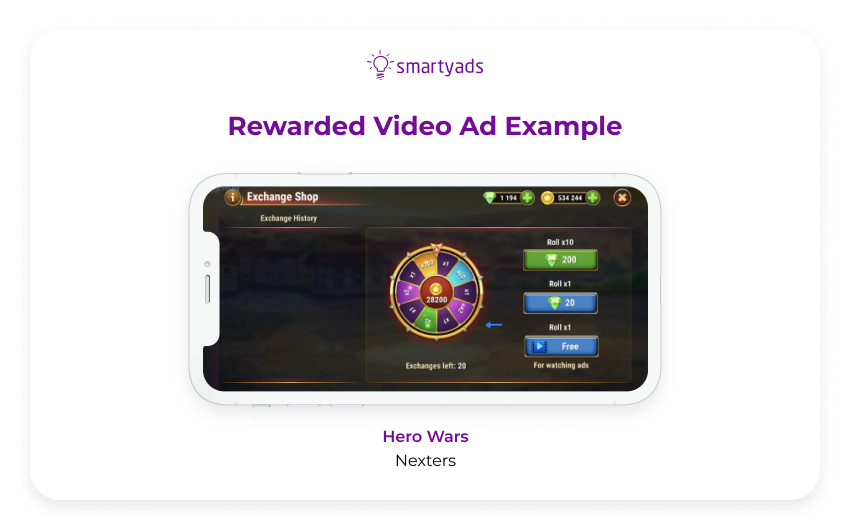
The introduction of reward advertising in Hero Wars yielded remarkable results. Engagement levels soared by 73%, and daily user engagement (DEU) increased by 59%.
Going beyond mere quantitative metrics, this strategy enhanced the overall gaming experience by fulfilling user needs, elevating user satisfaction, and boosting engagement. This achievement underscores the effectiveness of reward-based video advertising in elevating player interaction and satisfaction within Hero Wars.
Earn To Die 2
Rewarded video example of Earn To Die 2, a captivating casual game crafted by the Sydney-based developer Not Doppler, embarked on a strategic journey to harness the potential of rewarded video ads to enhance its distinctive in-game economy.
In pursuit of this goal, Not Doppler forged a strategic partnership with ironSource, a renowned mediation platform, to elevate their revenue streams and boost their eCPM (effective cost per mille).
At the heart of this success story lies the ingenious implementation of a built-in rewarded video system that seamlessly adapts to the player's progress throughout the game. This dynamic system periodically presents players with the enticing opportunity to earn a "double reward", effectively enhancing the gaming experience and incentivizing engagement.
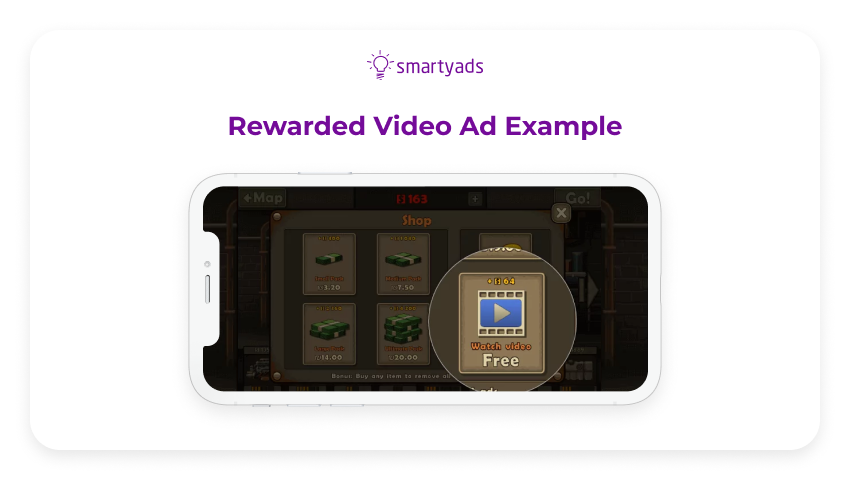
The impact of this strategic move was nothing short of remarkable. Earn To Die 2's engagement rate experienced a notable surge, with a remarkable 38% increase. This surge signifies a compelling uptick in player interaction and immersion within the game's narrative, reaffirming the game's status as a player-favorite within the mobile gaming landscape.
Best Rewarded Video Ads Placements
When it comes to incorporating rewarded video ads into your mobile game, a strategic and discerning approach is essential.
Within the realm of rewarded video ads, a variety of types and ad placement options exist. Your mission is to meticulously identify and select the ones that align most harmoniously with the nature and context of your game. This tailored selection process ensures that the integration of rewarded video ads seamlessly enhances the user experience while optimizing revenue potential.
Rewarded video ads in the Start Menu
Enabling the reward-based advertising option on the game's main screen ensures that a substantial user base gets exposed to it. This proves particularly advantageous in introducing newcomers to this feature right from the game's outset, enticing them with the idea of value exchange. Additionally, it grants significant visibility to users who may have never ventured into the app store.
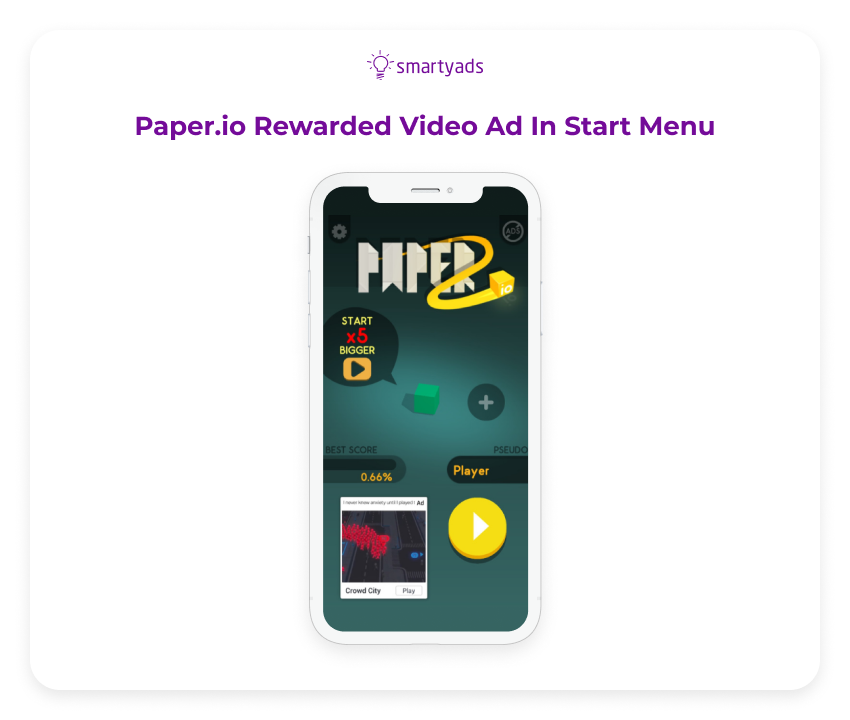
This is how Paper.io, a hyper-casual game, seamlessly integrated rewarded video ads into their start menu.
Typically, this placement can be incorporated on a large scale without the risk of impacting in-app purchases negatively. Moreover, it can positively enhance user retention rates and extend gaming sessions.
Rewarded video ads in the Side Menu
Incorporating rewarded video ads within the side menu provides users with a remarkable and enduring opportunity to acquire supplementary resources at their convenience, available for access at any given moment.
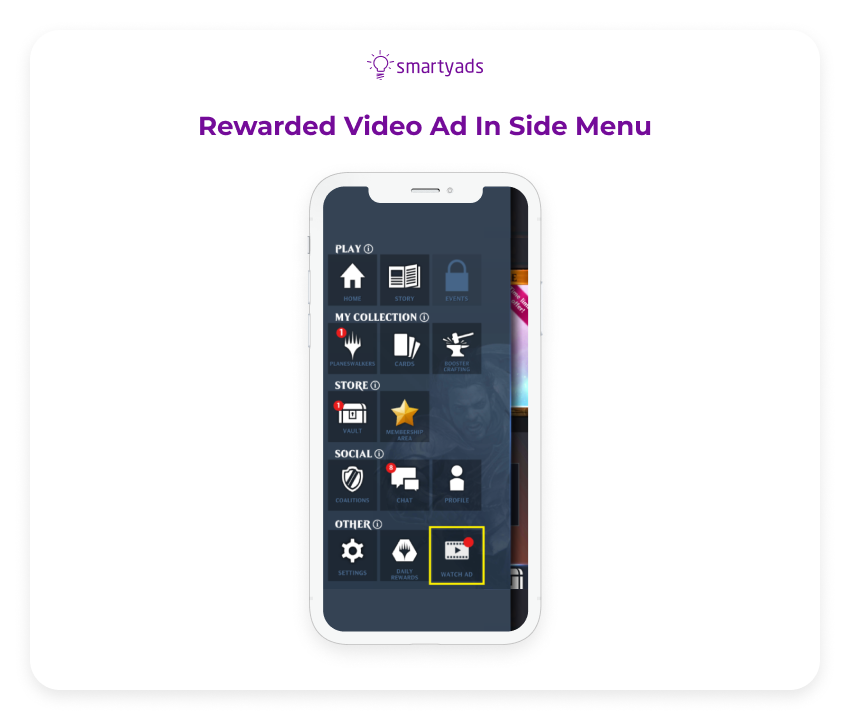
This feature enhances the user experience and ensures a non-invasive approach. Users have the flexibility to engage with these advertisements on their own terms, granting them the freedom to choose when they wish to avail themselves of these additional resources. This empowerment of choice fosters a sense of autonomy and bolsters user engagement by allowing them to align their interaction with the game with their individual preferences and needs.
Daily Reward Multiplier
You've likely encountered messages akin to "Welcome back – claim and double your daily reward" in various gaming experiences. Such offers are commonly featured in games that offer daily rewards to their players.
For those who faithfully revisit the game each day and engage with a video, the allure of multiple rewards beckons. The primary advantage of this strategic placement lies in its ability to monetize the most committed and engaged players on a daily basis.
By enticing players to return regularly and participate in these video interactions, game developers foster a sense of loyalty and open up a consistent avenue for revenue generation. This approach capitalizes on the commitment of players who invest their time and attention in the game, rewarding their dedication with enhanced benefits.
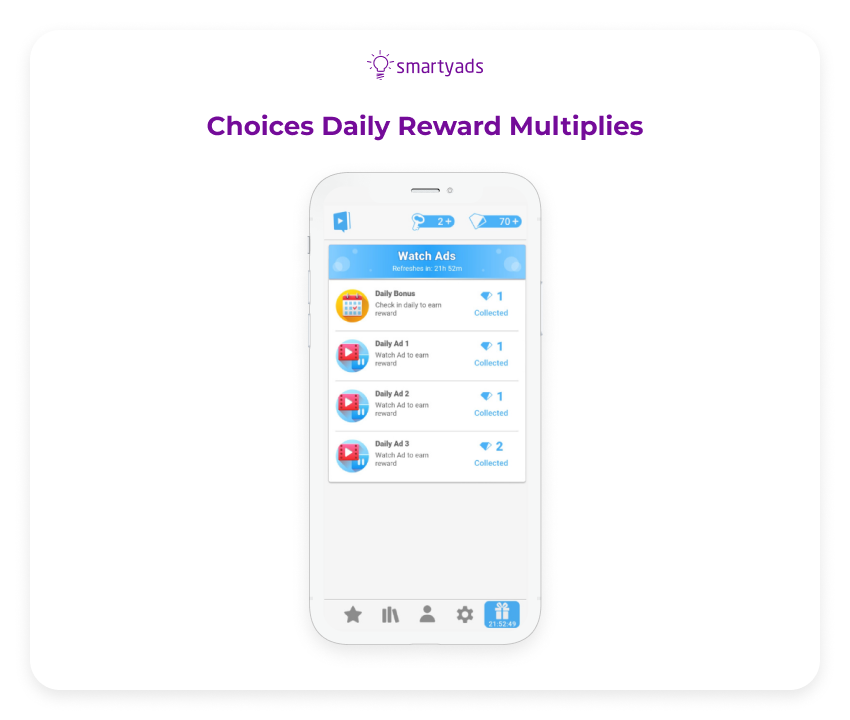
Above, you can observe an illustrative instance from a simulation game called Choices, where players can view three daily advertisements to amplify their daily bonuses. Notably, the first two ads yield one diamond each, while the third generously doubles the reward.
Yet, it's worth noting that this multiplier feature need not be restricted to a daily cadence. Alternatively, developers can implement rewarded video ads every time a user returns to the game, offering a flexible and adaptable approach.
Should players opt to engage with this ad-driven enhancement, it holds the potential to significantly bolster retention rates, a benefit that transcends genre boundaries. This versatile feature can be effectively employed across a spectrum of game genres, with the nature of the rewards and offers varying to suit the context and preferences of the player base.
End-of-Game Reward Multiplier
In the world of gaming, many titles incorporate the concept of rewarding players upon the successful completion of missions or levels. However, this conventional placement can also serve as the canvas for an entirely distinct type of reward multiplier, specifically tailored for the conclusion of the game itself.
This innovative approach is rooted in the idea that players accumulate valuable in-game items, such as stars or gems, and are offered the opportunity to amass even more of these coveted resources in exchange for watching a brief advertisement.
The allure of this option can be irresistibly enticing to players. It taps into a psychological sentiment that often resonates with gamers: the sense of accomplishment after conquering a challenging level or mission. Players may find themselves thinking along the lines of, "I've invested significant effort to triumph over this level; therefore, I deserve to reap the maximum rewards available to me".

Here's an illustrative instance of this particular multiplier feature in action, as demonstrated in the game Hunter Assassin.
However, a noteworthy drawback of this rewards advertising placement becomes apparent. If players are on the verge of exiting the game immediately after completing a level, there is a chance that they might overlook this rewarding opportunity.
Implementing end-of-game multipliers is not limited by genre and can be seamlessly integrated into any game structured around levels or missions. What distinguishes this placement is its inherent potential to captivate player engagement, ensuring that it remains a versatile and effective tool across the diverse spectrum of gaming experiences.
Conclusions
In summary, rewarded video advertising thrives on its core principle of empowering users with control over the ads they encounter, offering them tangible rewards in return for their engagement. This approach diverges from the disruptive nature of interstitial ads, as users willingly choose to participate in ad experiences at their convenience, fostering a more harmonious and user-centric engagement model.
Don't miss the opportunity to get additional benefits and run rewarded video ads now with SmartyAds DSP!
FAQ
Rewarded video ads are a type of ad format commonly used in mobile apps and games. Users voluntarily engage with short video ads in exchange for in-app rewards, such as virtual currency, power-ups, or additional content. This approach provides a non-intrusive way to monetize apps while enhancing user engagement and retention.
No, rewarded video ads are not limited to mobile games. While they are commonly used in mobile apps and games, they can also be employed in various other types of mobile applications, such as productivity apps, social media apps, or e-commerce platforms. The key is to offer users valuable incentives for engaging with the ads, regardless of the app's category.
The ideal placement for rewarded video ads depends on the app's user experience and user flow. Generally, opt-in placements, where users choose to engage with ads voluntarily, tend to perform better. Ultimately, the placement should align with user behavior and preferences for optimal results.
The ideal length for rewarded video ads typically ranges from 15 to 30 seconds. This duration strikes a balance between providing enough content to convey the message and not overly disrupting the user experience. However, it's crucial to consider the app's context and user preferences, as shorter or longer ad lengths may be more suitable in specific situations.

